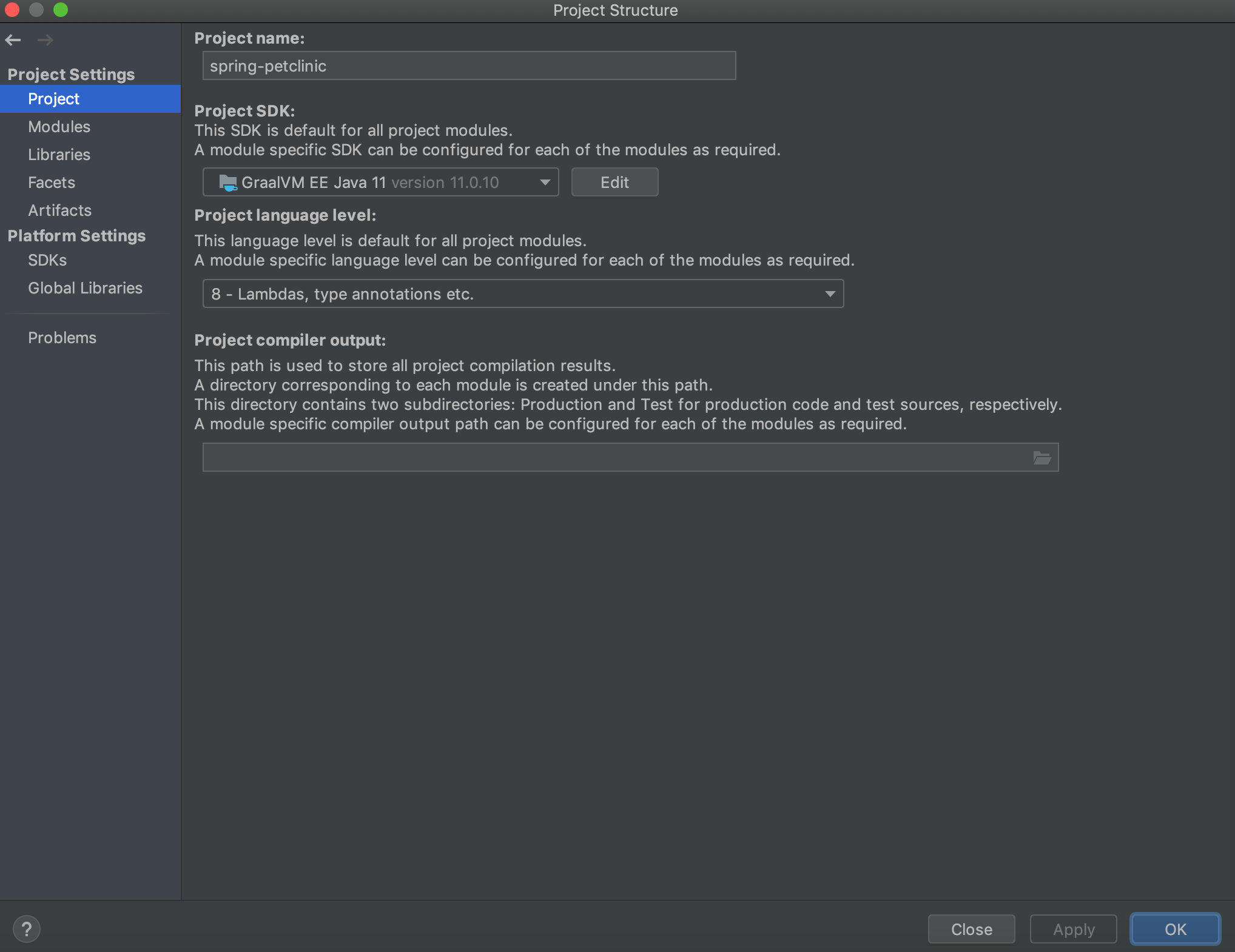


- DEFAULT JDK PATH IN MAC HOW TO
- DEFAULT JDK PATH IN MAC MAC OS X
- DEFAULT JDK PATH IN MAC INSTALL
- DEFAULT JDK PATH IN MAC MANUAL
- DEFAULT JDK PATH IN MAC CODE
Java version: 1.7.0_51, vendor: Oracle Corporation So my /etc/mavenrc looks like this: JAVA_HOME=`/usr/libexec/java_home`Īnd after that change Maven uses the correct version of Java: mvn -version returns: Apache Maven 3.2.1 (ea8b2b07643dbb1b84b6d16e1f08391b666bc1e9 T17:37:52+00:00) If you want, assign a new name to the JDK. Upon installation Java JDKs are stored under the following path: /Library/Java/JavaVirtualMachines You can simply use the Finder Go-To Shortcut by tapping CMND+SHIFT+G keys. Select the Home directory, and click Next. Step 2 - Setting a default Java JDK version in Bash Profile To select a default Java JDK version it is essential to understand where these JDKs are stored. button in the EXPLORER title bar and select. The directory chooser should show Home and MacOS, and Home should have an icon on it indicating it is a Java home directory. By default, the Java Projects view is displayed below the Explorer view.
DEFAULT JDK PATH IN MAC MANUAL
You can find more options from manual pages: man java_home. Type '/Library/Java/JavaVirtualMachines/1.7.0.jdk/Contents' in the File field.
DEFAULT JDK PATH IN MAC MAC OS X
Mac OS X has /usr/libexec/java_home command that returns a path suitable for setting the JAVA_HOME environment variable. All I had to do was to create one of these files (I chose /etc/mavenrc to apply the setting for all system users) and assign Java 1.7 home directory path to JAVA_HOME environment variable there. OS name: "mac os x", version: "10.9.3", arch: "x86_64", family: "mac"Ī quick look at Maven start-up command ( $M2_HOME/bin/mvn) and you can see that during start-up, Maven reads two files /etc/mavenrc and ~/.mavenrc. Java home: /System/Library/Java/JavaVirtualMachines/1.6.0.jdk/Contents/Homeĭefault locale: en_US, platform encoding: MacRoman Java version: 1.6.0_65, vendor: Apple Inc. Maven home: /usr/local/apache-maven-3.2.1 Java HotSpot(TM) 64-Bit Server VM (build 24.51-b03, mixed mode) Java(TM) SE Runtime Environment (build 1.7.0_51-b13) The java -version command was giving following output: java version "1.7.0_51" Whenever you I navigate to this directory or a sub-directory of it, then jenv will ensure that Java 12 will be used.3.2.1 on Mac OS X and discovered that Maven did not use my default Java version (set to 1.7). java-version file in the directory with the specified version.

For example to set Java 12 for OpenWhisk, I navigate to ~/Project/openwhisk and type: Run cd in terminal to go to the current user home directory. bashprofile file, this file is saved in the current user’s home directory. Here the step-by-step procedure under Mac OS X: In the menu click Eclipse -> Preferences.
DEFAULT JDK PATH IN MAC CODE
First, all environment variable settings are saved in the current user’s. Sometimes it happens that we have to change or add the JDK/JRE version used by eclipse and/or we want to access the correct source code of the JDK.
DEFAULT JDK PATH IN MAC HOW TO
I like to set a given Java version on a per-directory basis using jenv local. Do not worry, this article will tell you how to do it in macOS. Update: with newer version of jenv, use jenv local * system (set by /Users/rob/.jenv/version) Jenv’s versions will provide you a list of the available versions on your system: ls /Library/Java/JavaVirtualMachines/ will tell you. The exact versions depend on what you have installed. Type command: export JAVAHOME(/usr/libexec/javahome) and press Escape key for. $ jenv add /Library/Java/JavaVirtualMachines/adoptopenjdk-8.jdk/Contents/Home/ Type command: vim /.bashprofile and Hit Enter 3. $ jenv add /Library/Java/JavaVirtualMachines/adoptopenjdk-12.jdk/Contents/Home/ The Java preferences open in a separate window, called Java Control Panel. Simply open System Preferences (Apple > System Preferences), and then click Java (you will see the Java icon). $ jenv add /Library/Java/JavaVirtualMachines/jdk-15.0.1.jdk/Contents/Home/ System Preferences This one is the easiest option for most users that like using the traditional, visual approach to computing on macOS. The next step is to add our Java versions to jenv: Restart your terminal to pick up the change. We now add jenv to our terminal by adding the following to.
DEFAULT JDK PATH IN MAC INSTALL
Looking around the Internet, I discovered jenv which shouldn’t have surprised me as I use pyenv and I’m aware of rbenv too.Īs I use Homebrew, these are the commands I used.įirstly install jenv, the latest Java (15 at this time) and any other versions you need. Setup Default JRE as JDK Once you have started Eclipse, click Window/Preference: Select Java/Install JREs on the left, click the Add. When working on OpenWhisk, I discovered that it needed a different Java to the one I had installed.


 0 kommentar(er)
0 kommentar(er)
